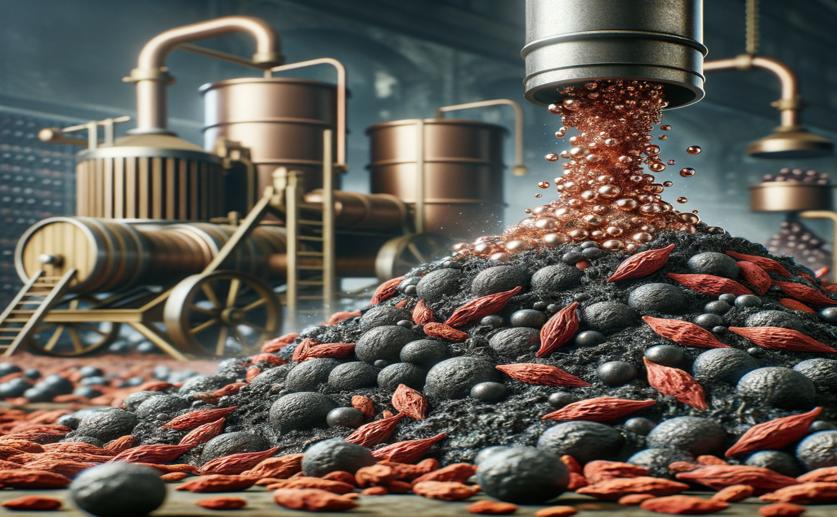
Recycling Waste from Goji Berry Wine to Remove Copper
Jim Crocker
27th April, 2024

Image Source: Natural Science News, 2024
Key Findings
- Researchers at Shaanxi Normal University found a way to recycle waste from Chinese wolfberry wine distillation
- The recycled byproducts, once cleaned of copper ions, enhanced the brandy's quality with higher antioxidant levels
- The recombined brandy contained more beneficial compounds, suggesting improved health benefits and flavor
AgricultureBiotechPlant Science
References
Main Study
1) Removal of Cu (II) by ion exchange resin and its re-utilization of the residual solution from the distilled Lycium barbarum wine.
Published 30th June, 2024 (future Journal edition)
https://doi.org/10.1016/j.fochx.2024.101380
Related Studies
2) A comparative study for the removal of hexavalent chromium from aqueous solution by agriculture wastes' carbons.
3) Multifaceted role of phyto-derived polyphenols in nanodrug delivery systems.
4) Development of the Method for Determination of Volatile Sulfur Compounds (VSCs) in Fruit Brandy with the Use of HS-SPME/GC-MS.



 18th April, 2024 | Jim Crocker
18th April, 2024 | Jim Crocker